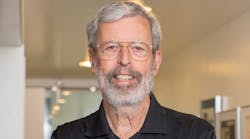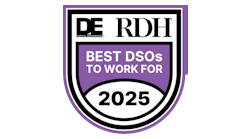Dr. Raymond Bertolotti, a giant in the history of bonding, literally coined the phrase “adhesion dentistry” in 1985. He is perhaps best known for bringing the total etch technique to North America. I had the opportunity to talk with him about the history of bonding and where we are in 2022.
Dr. Joshua Austin: Dr. Bertolotti, you’ve been teaching bonding to dentists for years. If you could push a button and immediately download a piece of knowledge about bonding into every dentist’s brain, what would it be?
Dr. Raymond Bertolotti: I think it’s important to remember Professor Takao Fusayama (a pioneer in minimally invasive and adhesive dentistry) as much as Greene Vardimin “G.V.” Black (one of the founders of modern dentistry in the US). With total etching and some help from Kuraray chemists, Professor Fusayama taught us to be "tooth doctors, not tooth destroy.
JA: That’s an excellent point. My father was a dentist in the '60s, '70s, and '80s. I believe he would think my preparations were garbage and vastly underprepared if he could see them today. I was trained by Dr. Jim Summitt in San Antonio, and amalgam was a big part of our education. We learned some posterior composite, but it was secondary. I know tens of thousands of dentists had the same education I did. Do you think most dentists today understand the differences between amalgam preps and resin composite preps? Do you think there are any rules of thumb that are often ignored during preparation?
RB: I doubt that most dentists understand the differences between good (tooth structure conserving and stress reducing) preparations for mechanically-retained amalgam and adhesion-retained composites. Even some prominent opinion leaders, such as Gordon Christensen, DDS, PhD, persist in not trusting adhesion, as reflected in their placement of retention features in composite preps. Beginning in the early 1980s, I have never seen a total debond of a class II composite that I have placed.
G.V. Black had no adhesives, so mechanical retention was required. However, from an engineering perspective, placing sharp line angles at the base of the amalgam could be called stupid. How many of these have resulted in fractured teeth, with the fracture originating at the sharp line angle? I see them frequently. Wouldn't it be much better if the prep was cut with a pear-shaped bur, providing retention as well as rounded (stress reducing) line angles?
JA: I went to dental school when fourth generation bonding was king. Today, it seems like the industry has shifted toward universal adhesives. How do you feel about this shift?
RB: This is not a good move for those who want the best possible bonding. It appears to be a marketing effort to simplify bonding for those dentists who do not want to take the time necessary to learn optimal bonding or those who can't follow directions. I am not aware of any universal adhesive that can match optimal bonding with the best adhesive for the given application.
JA: This is interesting information. What do you want to tell restorative dentists about choosing a bonding agent that is best for them? Any advice for finding the right bond?
RB: A dentist needs to decide if a compromise in bond strength and durability for a particular surface is acceptable. If it is, then the use of a universal bonding agent may be acceptable. If the application is a critical one, then it may be compelling to choose a bonding agent for best performance. It may be that the universal can be used most of the time and the dedicated bond used when required.
JA: I graduated dental school in 2006. Dr. Jim Summitt taught us that total etch was the only way, but recently we’ve heard a lot about dangers from etching dentin with phosphoric acid. Where do you stand on this as one of the pioneers of total etch technique?
RB: After learning total etch from Professor Fusayama in 1981, I tried it with his Clearfil Bond System-F. Gone were composite sensitivity without liners and the need for mechanical retention. I never looked back. I began to teach “Total etch, total seal, total success” in 1983 when we launched Fifth Quarter Seminars. I received mostly reports of clinical success regardless of the opposition from many famous academics. The occasional negative reports indicated that attention to detail was required for success. When self-etching with Liner Bond 2 was introduced in 1994, it was apparent that there was less technique sensitivity. Predictability has progressed as products and techniques were further refined. Now total etching, done separately or with self-etching products, is the standard of care.
JA: Thank you! This is great information. Finally, do you have any advice for the dentists who are thinking about changing their bonding agent?
RB: Manufacturers currently seem to be targeting easier and faster products. This is fine as long as we achieve acceptable results. However, the definition of "acceptable" is debatable. I would choose products based on their track record of success for a minimum of three years, based on independent studies from reliable investigators.
Editor's note: This article appeared in the May 2022 print edition of Dental Economics magazine. Dentists in North America are eligible for a complimentary print subscription. Sign up here.






